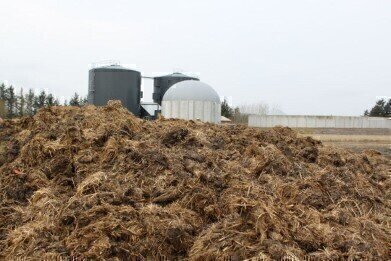Waste management
The Biogas Combi that Seeks to Make it Easier for Farmers
Sep 20 2013
The simple but highly effective ComBigaS approach to AD is proving that very notable biogas yields can be achieved, even when your raison d’être was borne out of a clear environmental decision.
Kent Skaanning, now chairman of the board of ComBigaS, who was a pig farmer and later Chairman of the Danish pig association, sought an all-round solution to the age old problem of slurry, its odour and its effects on local watercourses.
Thirteen years ago he determinedly built his own biogas plant – still operational today – but then, and now, instead of predicted ‘headline’ biogas yields at the expense of all else, he is still a firm believer in the creation of fertiliser and energy from waste, in a way that involves and benefits the local community. His ethos is that biogas should be the centre of an integrated recycling system – so, build an AD plant at the point of supply, not create fleets of lorries that punch a big hole in the PR of what some organisations claim to be ‘caring about the environment’. The ComBigaS plant in Denmark sees no vehicles from farms, because slurry is pumped in directly from five sites within a 5km radius.
“Simplicity is the open secret to the success of ComBigaS,” says Skanning. “One should understand your biogas as best you possibly can and work towards the most stable supply of feedstock. If for example you are using straw it can take 60-70 days to break down, whereas abattoir or fish waste can be only 6 days, so you must design your plant accordingly. Clearly, with far too many AD plants not working correctly or not working at all, there is either a lack of understanding or perhaps far too much focus on short term gains. We are dealing with a biological process that needs to be controlled, carefully and patiently”.
Skaanning travelled far and wide to seek opinions and collect invaluable data before unveiling the ComBigaS AD model, visiting sites in Germany, Sweden, the UK and the U S.
He eventually decided upon a thermophilic biogas process, operating at a constant 52°C, compared to 37°C for most mesophilic plants, keen to eliminate bacteria such as salmonella that cannot survive the higher temperatures over a 6 hour period. In what is believed to be the first design of its type, ComBigaS uses heat pumps to achieve the greater temperature – and very importantly, maintain it. The thermophilic process employed by ComBigaS also uses half the power of mesophilic, and fully insulated steel plate covered digesters have nothing like the heat loss that is wasted at most biogas plants.
“Just a half degree change in temperature can affect the gas”, adds Skaanning, “so it is vital to install the right mixers; equipment that is designed for biogas and very hard wearing”.
ComBigaS use Landia’s GasMix system to produce a complete mixing pattern that cost-effectively increases the amount of biogas. Installed externally for easy access during maintenance, the GasMix ejector nozzles are positioned at different levels of the 1500m3 digesters to create a combined horizontal and vertical mixing pattern to ensure complete mixing.
Skaanning commented: “We only need to operate the pumps for 15 minutes per hour, so we can keep energy costs under control. Landia’s GasMix also circulates the sludge, passing it through the chopper pump several times, which increases the amount of biogas that can be produced. As good a system as this is for biogas, it is just as important to us that maintenance is so easy, with no downtime – plus guaranteed back-up, which worryingly, many biogas plants don’t have. When a sub-standard mixer fails, gas will decrease, and ultimately a tank will have to be emptied, which is extremely costly all very unnecessary if you have the right feedstock and chosen the right equipment”.
Submersible mixers from Landia (UK) are also used by ComBigaS for its biomass storage tanks, as well as a long-shaft chopper pump in the pre-mixing tank that turns the typical 15% straw 85% manure (plus some abattoir waste) into a homogenous sludge. Requiring only two hours pay day for routine operational duties, the automated ComBigaS plant currently produces 2.2 million m3 of biogas a year, 1.95MW.
“The vast majority of farmers want their plant to be as automated as possible”, continued Skaanning. “They are far too busy already with their other responsibilities, so we make their biogas operation as simple and easy as we can. Consultation and co-operation between farmers is for the greater good because with the right AD plant, the right mixing equipment and a properly controlled feedstock, everyone benefits in this integrated recycling system by swapping slurry for good quality digestate and low-cost energy”.
Events
Aug 24 2025 Stockholm, Sweden and online
Aug 27 2025 Busan, South Korea
Sep 02 2025 Mexico City, Mexico
Sep 02 2025 Mexico City, Mexico
Sep 09 2025 Moscow, Russia


.jpg)






.jpg)




